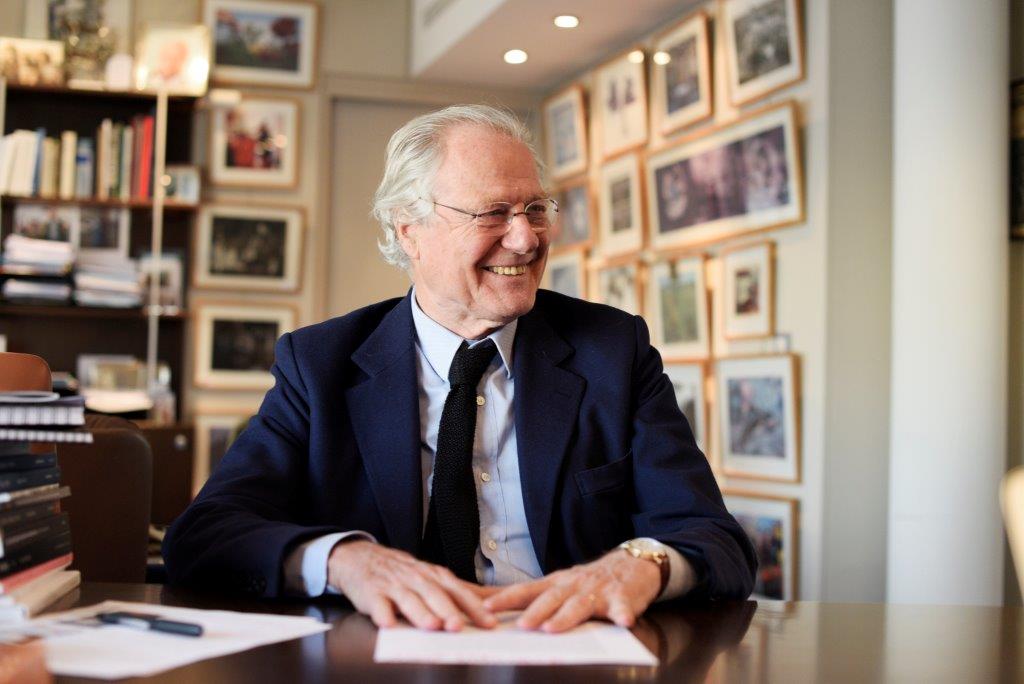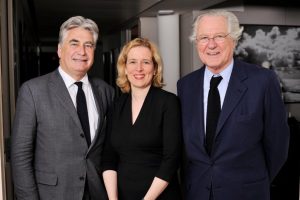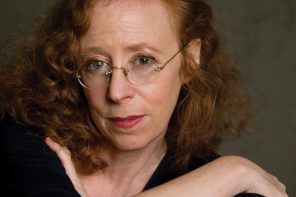Château Lafite Rothschild is, indisputably, one of the great wine estates of the world, having survived both war and revolution. The Bordeaux estate has been in the Rothschild family since 1868 and was restored to greatness after the ravages of World War II by Baron Élie de Rothschild. He passed it to his nephew, Baron Éric de Rothschild, in 1974, a period which coincided with a series of crises in Bordeaux. Today, Château Lafite Rothschild is under the direction of Baron Éric, now a banker and philanthropist. In the early ʼ80s, Lafite created the Domaines Barons de Rothschild (Lafite) group, which has estates from France to Chile.
MEININGER’S: Tell me your personal history with Château Lafite Rothschild.
ROTHSCHILD: I took over the running of Lafite in 1974 when my Uncle Élie who had looked after it for many years, decided to retire. He had been very generous with me because, a few years earlier, when I was in my early 20s, he said, “Go to Lafite as often as you want. Go with your friends. The house doesn’t have enough people coming to it and it’s good for a house to be alive.” I took advantage of this. The cook was very good and the wines were delicious and I had the run of the cellar. From time to time he would make remarks: “What did you do last weekend? Did you have a bath in the cellar?”
In 1974, when I took over Lafite, my uncle had run it at arm’s length. It was a different period, when people were less interested in quality. The wine which was priced the highest was considered the best. Things changed, because of the crisis of the early 1970s – the vintages weren’t very good, and in general Lafite really wasn’t doing everything it could to make the wine as good as possible. It was actually quite straightforward to make things better. When you have the unique soil of Lafite, when you can engage some good people and ask a marvellous gentleman like Monsieur Peynaud [Émile Peynaud, oenologist] to give you a hand, you can improve things quite quickly. But in the wine world, the results show up 10 or 15 years later.
MEININGER’S: What changes did you make?
ROTHSCHILD: Firstly, we began to look after the vineyard. That was really the beginning, but at the same time we began doing a much more serious selection in our winemaking. Peynaud came along and advised us on quite a lot and helped in the winemaking in general. We made many technical improvements, but that is not to say that we had not made some exceptional wines beforehand, using the old, time-tested recipes. The 1959 and 1961 Lafite, but also many other old vintages, are probably the best wines I have ever tasted. With less technology, we made beautiful wines.
MEININGER’S: Apart from the 1970s oil crisis, what was the cause of the Bordeaux crisis?
ROTHSCHILD: There was an incredible bubble caused by the entry of the Japanese into the market. As is usual in Bordeaux, the bubbles are followed by crashes, and for two years we didn’t sell a bottle of wine. There was no commercial activity at all. In those times, we sold 80% to 90% of our wines exclusively to the négociants and they just did not want to take any more, as they had bought too much wine at inflated prices and had difficulties in selling it.
MEININGER’S: It sounds like the current situation with the Chinese market. The Chinese were first besotted, and then disenchanted with Bordeaux, causing some vintages to halve in price.
ROTHSCHILD: It was a little bit the same, but I would say that at the time, the markets were less sophisticated. There wasn’t this secondary market which there is today. We are more prudent and have wider markets than we had at that time.
But the Bordeaux market has always had ups and downs. We also had crises, bubbles and crashes in the nineteenth century. It is also fair to say that the wines of Bordeaux, more than the other areas, are dependent on the weather. Our weather is variable and, in the old days, you got very important differences in the quality of vintages. Today, with our technical knowledge, we have been able to reduce these differences, but there are still vintages with a great reputation and others which are very good to drink, but when they are younger.
As the market is relatively small, when there are newcomers, there is always an inflationary effect. In the ʼ90s, the Russians came in and they bought a lot of wines, upping the prices quite considerably. But in general, if you look at the curve of the wine prices of Bordeaux, they have risen in the long term, often erratically, but the trend has been upwards as more and more people have become wine lovers.
When the Chinese came in, it was also a period of high industrial and financial development with many people making money, so this created a very big bubble!
MEININGER’S: The other thing that happened in the 1970s was the Judgement of Paris tasting in 1976, which many people claim turned the wine world on its head. What are your thoughts
ROTHSCHILD: The Judgement of Paris certainly aggravated many people in Bordeaux. Of course they did not want to believe it, but it had a very positive effect. It gave everybody a big kick in the pants, as they realised that other people in other areas were beginning to make some good wine, and were promoting them and selling them at high prices.
At the same moment, we had another phenomenon which was Parker. He began rating the wines, and from the moment he publicised these results, then everybody had to “keep up with the Joneses”. This forced all the châteaux in Bordeaux to take much more trouble with their winemaking and invest in new and more sophisticated equipment.
MEININGER’S: During the 1980s, you began to expand. There was the 1984 acquisition of Château Rieussec; in 1988 came a new cellar at Lafite and also the acquisition of Viña Los Vascos, Chile. Then Château L’Evangile, Pomerol in 1990. What was driving this push? And you also started an investment firm which, today, is part of the global Rothschild group.
ROTHSCHILD: Something happened that affected the family in 1981: the socialist government nationalised all our banking and industrial assets. Many members of the family left for London or New York, but my cousin David and myself decided to stay. At that time, this seemed a little mad, but we were young and wanted to stay in our country. We restarted a financial operation with only six people and $2m of capital, not even being allowed to call it Rothschild. This was not too difficult because a lot of old clients did not want to stay in a nationalised bank. This business actually grew quite rapidly and, 25 years later, we merged with our English cousins to recreate the old Rothschild banking group. Also, I had been running Lafite for six or seven years and had a good feeling for the wine industry and felt it could be very successful in the future. So we decided to develop this area also.
MEININGER’S: Are there any business decisions you regret?
ROTHSCHILD: At that time, when we were restarting, I feel that I was too prudent! We could have bought some very exciting Bordeaux properties very cheaply: Margaux, Pichon or Pavie. But this would have meant taking on quite a lot of debt which was expensive at that time and I didn’t have the “guts” to do it and to take such a risk.
MEININGER’S: Yet surely moving into Chile was very risky, because in 1990, Chile was an unknown in the wider wine world.
ROTHSCHILD: When I was working my shipping, we used to bring in wine tankers from Chile and at seven in the morning you had to go and taste the wine to see if it was drinkable or not. I found some of them were quite good. The prices in Bordeaux were beginning to go up very steeply and I did not want to take the risk of these large investments. I thought it was a better idea to go to places where you could buy properties at a less-inflated price. Chile at the time was run by Mr Pinochet and absolutely everything was for sale. We had good relations with a bank there, and the people told me Pinochet was going to leave in two or three years’ time, so this was the time to buy. We bought the whole property for a really reasonable price and I must say that we don’t regret it as now. It is an entity which has a very good profitability and which sells over 5m bottles a year.
MEININGER’S: You must really have been bitten by the wine bug by then, because you went on to develop the Collection in 1995 – wines from representative areas of Bordeaux – and then, in 1999, you went into a joint venture with the Catenas in Argentina, Bodegas Caro.
ROTHSCHILD: We met the Catena family in Argentina. The Catena group was one of the largest groups in wines in Argentina and the one making the best wines. Mr Catena was very charming, his wife was very nice and his daughter was very pretty. They wanted us to do something with them and they put at our disposal a lot of good vineyards. With them we developed Bodegas Caro, which is a small venture, but which makes absolutely delicious wines.
MEININGER’S: Château Rieussec is an historic Sauternes property – a Premier Cru Classé. Unfortunately, the market is difficult for Sauternes. What do you see ahead for the category?
ROTHSCHILD: We are going to do everything we can to rehabilitate the Sauternes wine. It’s incredibly sad that a wine of this quality is struggling so hard to sell. It is absolutely delicious, but itʼs not always easy to find a good moment to serve it. Today, we have the challenge of training sommeliers, journalists, and the wine-drinking public to appreciate it. In my house, we always have an aperitif of Champagne and Sauternes on the tray. And more than half of the people actually prefer to have a glass of Sauternes rather than Champagne. So if we were able to make this fashionable, we certainly could change the marketing of Sauternes radically. This is not easy, but we must save this rare jewel in the Bordeaux crown.
MEININGER’S: And then in 1999 came the acquisition of Domaine d’Aussières in Languedoc. It must have seemed a somewhat risky venture in the late ʼ90s.
ROTHSCHILD: Having worked in areas where the reputation of wine was not always the best, we really felt that Languedoc could be the next exciting frontier. When we bought this property, 80% of the vines had been abandoned for many years, so we were able to start from scratch. We felt we could use the brute power of the wines of the area, combined with a little bit of Bordeaux subtlety that we knew well how to control, to make something quite exceptional. Sixteen years later, I think we have managed something and everybody who drinks Château d’Aussières compliments us on its quality. The policy which had prevailed in this area, where vignerons were paid to pull out their vines and then, a few years later, paid to replant, was totally short-sighted. The one thing to do is to make this wine better and I think that it is what the whole area has now understood.
MEININGER’S: In 2011 you also planted Syrah and Cabernet Sauvignon in China’s Penglai Peninsula in Shandong Province. Most Western companies have headed for Ningxia. Why Shandong?
ROTHSCHILD: We were having a heyday in China. We were doing quite a lot of banking there and we knew quite a lot of Chinese people who were excited by wine. People were saying, “Please let’s do a vineyard with you in China.” There was an element of feeling that it was a nation that was really moving towards wine drinking, and the day that they would become a wine-drinking nation you would be able to sell a lot of wine there. We decided to go to China, as it was going to be a wine-drinking nation and it was worthwhile to be there. We went to Shandong because it was an area where they were already making wines and where they didn’t have the terrible difficulties which exist in other parts of China, with great cold winters in certain places and too- hot summers in others. We have been able to find, with our geologist, an area at quite high altitude with very well-drained soils, where I think we will be able to make very good wines.
MEININGER’S: Bordeaux is coming to the end of another era, in that Robert Parker will probably retire sometime soon. How do you think that will affect the region?
ROTHSCHILD: The big voice will be gone, but its echo will continue to resound round the vineyards of the world. The big thing about Parker is that he got people to taste wine, and when people began tasting wine, they began to love wine. Parker has done his job and he has preached the gospel and it won’t be forgotten. There are already many people following in his footsteps.
MEININGER’S: Finally, Château Lafite Rothschild remains the most expensive and sought-after wine in the world. Why?
ROTHSCHILD: There’s no mystery. If you read the book we brought out about Lafite, the first chapter is about geology. In general, Bordeaux has a very complex and alluvial soil; this complexity makes the quality of Bordeaux, and the First Grand Cru properties benefit from this geological marvel to the utmost. There has been a classification of the best wines made in 1855. The extraordinary thing is that this classification has not changed, and the Premiers Crus (and among them, of course, Lafite) make the most exciting wines, and the wines which have the greatest possibility for ageing. Maybe that is why they are so sought after and why they give you this immense pleasure.
Felicity Carter
This article first appeared in Issue 1, 2016 of Meininger’s Wine Business International magazine.





